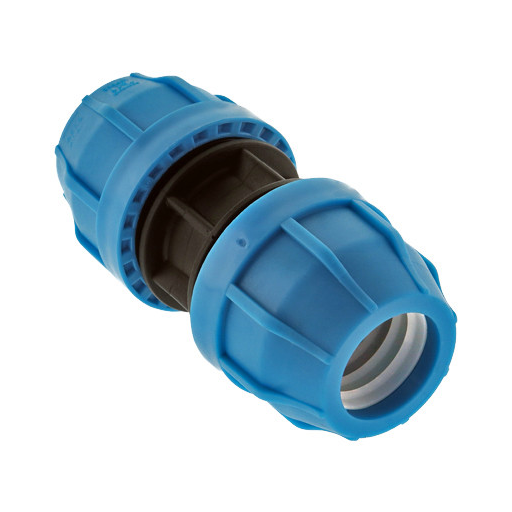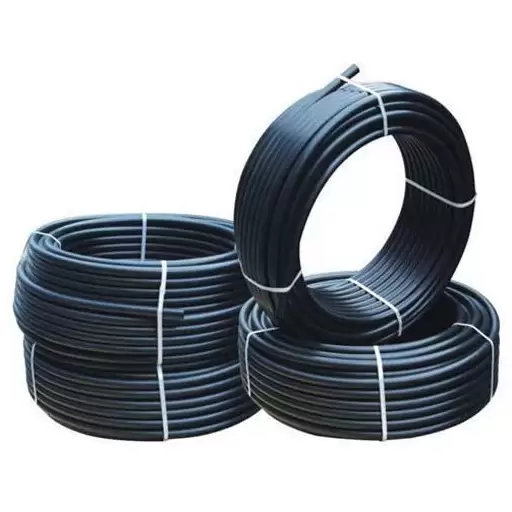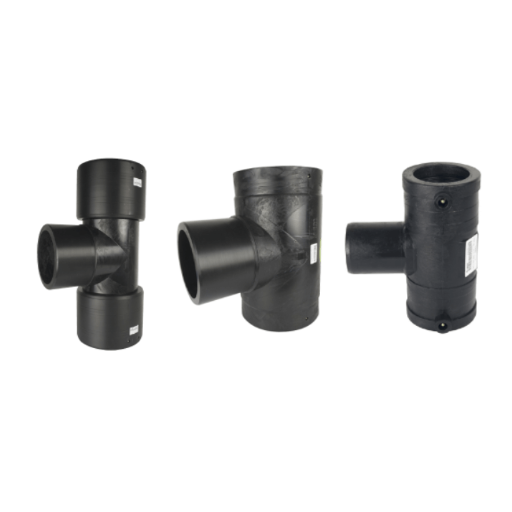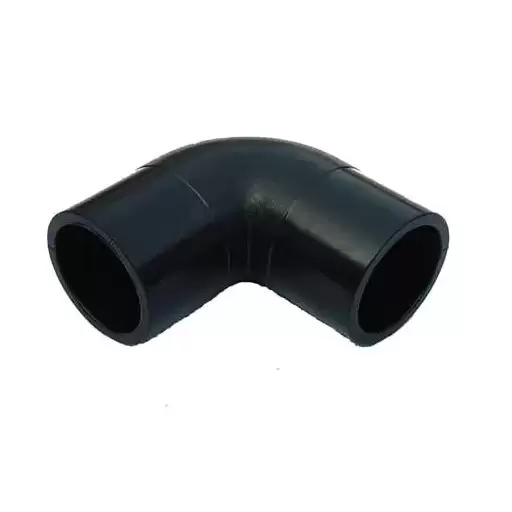High-density polyethylene (HDPE) pipe couplings are a critical component in modern infrastructure, widely recognized for their durability, flexibility, and versatility. Whether used in water systems, gas distribution, or industrial applications, HDPE couplings ensure secure and reliable connections across a variety of piping systems. This article provides a comprehensive exploration of HDPE pipe couplings, focusing on their types, key applications, and the various joining methods available. By understanding these aspects, you can make informed decisions for your specific project needs, achieving optimal performance and long-term reliability.
Types of HDPE Pipe Couplings
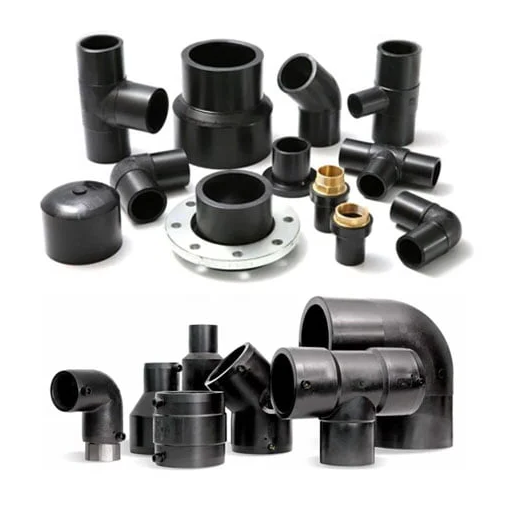
Electrofusion Couplings
The electrofusion couplings are meant to connect two HDPE pipes using a very efficient and simple method involving electrical resistance. The coupling is equipped with heating elements that, upon activation, heat the surfaces of both the pipe and the coupling to strike down a fairly strong and uniform bond. This way, additional sealing agents or mechanical fasteners hardly come into play, which is why it comes in handy for applications where watertight, long-lasting connections are required.
The other main advantage of electrofusion couplings is their capability to deal with all diameters and pressure needs of pipes. Hence, they are widely known and used in applications such as water distribution, gas pipeline installation, and wastewater management, where accurate and tightly secured joints become paramount. Where space confining issues or trenching losses make the traditional joining method, that is butt fusion, difficult to consider, electrofusion sealing is the safest procedure. It always produces an impeccable joint with the least risk of failure, even under adverse circumstances.
Generally, installing an electrofusion coupling calls for a procedure involving the preparation of the pipe ends, which must undergo cleaning and scraping to remove the oxidation layer if any. Specialized electrofusion control units (ECUs) will then apply the welding parameters to ensure the welding process is consistent and quality is maintained. The instructions laid down by the manufacturers, together with the standards applicable, must be observed to achieve the expected performance. These are really a great choice for projects that emphasize quick installation, permanent performance, and environmental stress resistance.
Mechanical Couplings
The chief use of mechanical couplings in pipeline systems is to join two lengths of pipe without the need for any welding or fusing. A flux of mechanical force, usually supplied by either compression or threading, fuses the pipe ends together with a firm and leakproof seal. Such couplings become handy when it comes to swift repairs or installations wherein heat could form an unsafe alternative.
The primary reason mechanical couplings are useful is that they can work with different kinds of pipe materials steel, copper, polyethylene (PE), and polyvinyl chloride (PVC). A coupling will come to great use if one can accept small misalignments in a piping layout. This means mechanical couplings save a huge amount of time during an emergency repair or under difficult field conditions.
Mechanical couplings are always to be used within their pressure and temperature limits as indicated by the manufacturer. Couplings should always be installed by checking that all components-gaskets, fasteners-are in position and torqued according to specifications. Future inspection and maintenance need to be carried out to maintain their integrity throughout the years, especially for those under higher stress or in applications with corrosive substances. Their versatility and reliability allow mechanical coupling to be relied upon for both temporary and permanent pipeline connections.
Flange Connectors
A flange connector is a critical component that joins pipes, valves, pumps, or any equipment to form a strong, leak-proof assembly. These connectors, typically used in industrial contexts, permit quick assembly, disassembly, and access for maintenance or inspection. Flanges are bolted together with gaskets commonly used as their sealing medium to prevent leakage. They are generally used with piping systems that carry liquids, gases, or other substances at various pressures and temperatures.
Selection of flange connectors depends on the compatibility of materials, pressure ratings, and environmental conditions. Materials such as stainless steel, carbon steel, and alloys are often chosen for their resistance to corrosion, extreme temperatures, and mechanical stress. Pressure classes of flanges, as stipulated in various standards such as ASME and ANSI, ensure that the connectors cannot fail while in use under set operating pressure. The common flange types include weld neck, slip-on, socket weld, and blind flanges, picked according to user needs.
Installation of flange connectors must be done perfectly or it will create problems. Flange faces need to be aligned and clean, with gaskets laid centrally between them. Bolts are tightened in a prescribed pattern and torque levels set by the manufacturer go an even distribution of compressive force. Further inspection and maintenance are recommended to ensure detection of wear, misalignment, and corrosion; as those will all ensure a compromised integrity and reliability of the system if they go unchecked.
Applications of HDPE Pipe Couplings
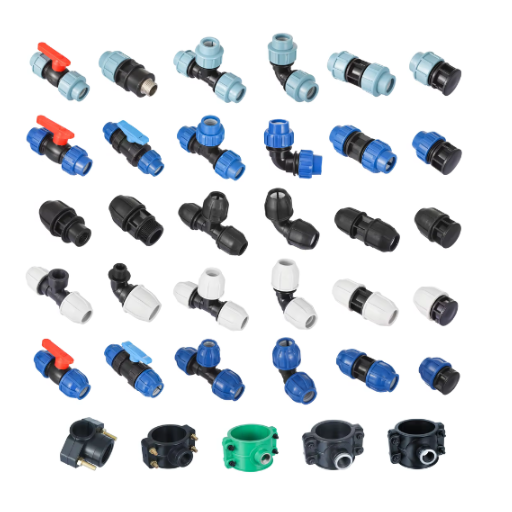
Industrial Applications
HDPE pipe couplings find extensive applications in industries as they are highly durable, flexible, and best resistant to corrosion and chemical attacks. In the following section, the five most important industrial applications where HDPE pipe couplings play a key role are mentioned:
- Water and Wastewater Management: HDPE couplings stand about 90% vital in water and wastewater transport. HDPE is waterproof-resistant, so highly recommended for water application and municipal-related water distribution systems and sewage infrastructure. Reports indicate that 70% to 75% of all new pipelines in the world for water applications use HDPE because of its long life and very little maintenance.
- Oil and Gas Industry: The oil and gas industry utilizes HDPE pipe couplings to carry hydrocarbons safely and efficiently. Due to corrosive resistance, HDPE coupling services suit a number of applications like crude oil transport, gathering lines, and offshore applications.
- Mining Operations: HDPE couplings are widely used in mining activities for slurry transport, drainage systems, and processing operations. The high abrasion resistance and ability to withstand heavy loads ensure their best functioning in abrasive handling environments.
- Chemical Processing: HDPE couplings find an application in chemical processing plants because they are resistant to almost any kind of chemicals. These setups normally work with highly aggressive chemical mixtures and thereby ensure the safe transport and containment of these mixtures without leakage or contamination.
- Agricultural Irrigation Systems: The HDPE couplings find wide application in agriculture in large irrigation projects. They are necessary for delivering water safely and efficiently in farming operations: Light in weight, resistant to UV rays, and able to tolerate high water pressure.
Each of these uses shows how versatile and reliable HDPE pipe couplings are in providing solutions to the peculiar demands of industrial processes that promote safer and efficient operations in various sectors.
Agricultural Uses
The presence of HDPE pipe couplings in irrigation systems allows a justification for their operational working conditions put before them by agriculture. They are extremely lightweight, making them good for working in the field. They are resistant to UV rays, a good attribute for above-ground irrigation schemes where constant exposure to sunlight is the norm.
Another key advantage offered by HDPE couplings is their ability to resist high water pressures without giving away. Due to the agricultural activities requiring a constant supply of water over a vast field, pressure resistance will add to crop health and yield optimization. Pressure resistance will mean that water leakage and bursting are reduced to almost nil, thus conserving water and saving on maintenance charges for the farmer.
In addition to that, HDPE couplings serve to make an irrigation network adaptable in agriculture. They are designed to provide services to connect further or different systems of pipes so that the farmer can extend or alter the irrigation layout as and when required. Therefore, taken in conjunction with the fact that they require almost no maintenance, HDPE pipe couplings stand as this reliable and economic solution tailor-made for the ever-expanding need for contemporary agricultural water management.
Municipal Water Systems
Due to their highest durability, corrosion resistance, and adaptability to diverse infrastructure, HDPE pipe couplings are an essential component in municipal water supply systems. Urban water distribution networks demand materials that can withstand both internal water pressure and external stressors such as ground movement or traffic loads. HDPE couplings stand the test of time under these situations, thus preserving the integrity of water pipelines for prolonged operational efficiency.
Additionally, HDPE couplings ease installation and bring down labor costs, being both lightweight and fashionable in the existing system with ease. They perform incredibly well in minimizing leaks, which is paramount because the old municipal pipelines are, most of the time, leaky. Introducing HDPE solutions is responsible for significant NRW cutbacks globally, which are at present somewhere around 25-30% of water losses in municipal systems.
Operational lifetimes in excess of 50 years may well have been achieved with minimal maintenance requirements in municipalities adopting truly advanced HDPE piping materials, including couplings. Apart from guaranteeing cost-effectiveness in the long run, they promote sustainability through a gross reduction in the waste of resources: repair efforts and water losses alike. This makes HDPE couplings a titan in the sheer modernization of urban water infrastructure while solving bottlenecks arising from the massive urban population and increased demand for water.
Joining Methods for HDPE Pipes
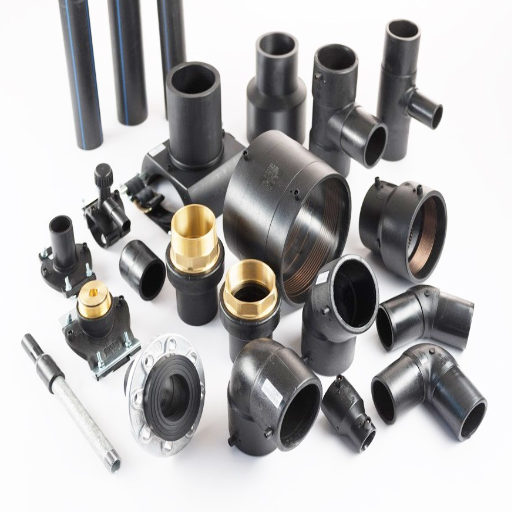
Electrofusion Joining Method
The electrofusion joining technique is the most reliable and precise way of joining HDPE pipes. Special electrofusion fittings with embedded electrical heating wires are used in the method. When current is passed through the wires, heating occurs due to resistance, melting the inner surface of the fitting and the external surface of the pipe and welding them together. The weld so formed is very seamless and almost as much or more in strength than the parent material itself.
Electrofusion is especially useful in scenarios where a flawless leak-proof joint is essential and spatial constraints may prevent the use of butt fusion joining in an area. The other main advantage of the process is it produces a durable and corrosion-resistant joint; both attributes are vital for water distribution, gas transportation, and chemical piping systems. It is recorded that piping systems joined through electrofusion have a service life of more than 50 years, given that the installation is carried out properly and some minimal operating conditions are satisfied.
In addition, the process further provides handling and control that limits the possibility of joint failure. With further technological development, an automatic fusion machine is being devised to monitor and control the fusion process with complete documentation for quality assurance. This brings a step further consistency and reliability that can even operate under harsh operational conditions, which is one of the reasons endearing the electrofusion to numerous HDPE applications.
Mechanical Joining Techniques
Application of mechanical joining methods where high strength, repeatability, and ease of assembly or disassembly are required. In those cases where thermal joining through methods of electrofusion or welding covers very small grounds for practicality, these methods become very well-placed alternatives. Some examples would be the flanged connections, which are the most commonly employed types, bolt-and-nut assemblies, and compression fittings.
The flanged connection makes use of a combination of gaskets and bolts to effect a secure, leakproof seal between the components of the pipeline. They are often specified for high-pressure systems, since the design allows for the maintenance and replacement of components without placing the whole system in jeopardy. Bolt-and-nut assemblies have applications in diverse industrial settings, providing for more robust structural integrity under dynamic loading conditions. Compression fittings, on the other hand, register high value in fluid and gas distribution systems as a relatively simple join, which is not permanent and requires very few specialized tools.
Recent advances in mechanical joining have concentrated on enhancing the compatibility of materials and the working life of joints. Materials development, surface treatments, anti-corrosion coatings, and advanced alloys have combined to greatly extend the lifespan of mechanical joints in adverse environments. Computational design tools are now also being used to optimize joint geometry for even stress distribution under use loads and minimal potential for fatigue or outright failure. These developments further the cause of making mechanical joining systems ever more reliable and efficient for industrial and infrastructural usage.
Common Methods for Joining HDPE
Various joining methods are used to guarantee reliable, hard-wearing, and application-specific HDPE connections. The methods used are:
- Butt Fusion Welding: Butt fusion is a thermal welding process wherein the two ends of an HDPE pipe-ends are heated at a defined temperature (usually about 400°F to 450°F) and pressed together under controlled force. The process produces a seamless, extremely strong joint that may be used where high pressure or crucial performance is involved.
- Electrofusion Welding: A special fitting containing electrical heating elements is used for electrofusion. Heat is generated by the electrical current that is passed into the fitting, which melts both the HDPE pipe material and the fitting to fuse them. It proves better than any other welding process in gas and water pipeline applications where precisely formed and leak-proof joints need to be made.
- Extrusion Welding: Mainly used in HDPE fabrication, extrusion welding involves employing a handheld welding gun to heat and extrude the filler material while melting the base material. This technique is suitable for joining sheets, liners, and tanks.
- Mechanical Joining Systems: Mechanical systems take advantage of flange connections, compression fittings, or grooved couplings to make connections using hardware physically. These systems are used where quick disassembly and maintenance are required or where welding is not applicable.
- Solvent Cementing: Though less common for HDPE, some special formulations of solvent adhesive chemically bind HDPE surfaces by softening the material, thereby creating an excellent connection once the solvent evaporates. This is done in rare cases or under low-pressure conditions.
Recent developments in joining technology for HDPE have centered around joint integrity under extreme operational conditions. For example, real-time heat monitoring during fusion welding through embedded sensors reduces human error and improves precision, while improvements in electrofusion fittings have cut down installation time and improved performance in corrosive environments. Such developments, combined with stringent quality control methods, are set to improve the reliability and performance of HDPE joining methods in water infrastructure, gas distribution, and industrial containment systems.
Benefits of Using HDPE Pipe Couplings
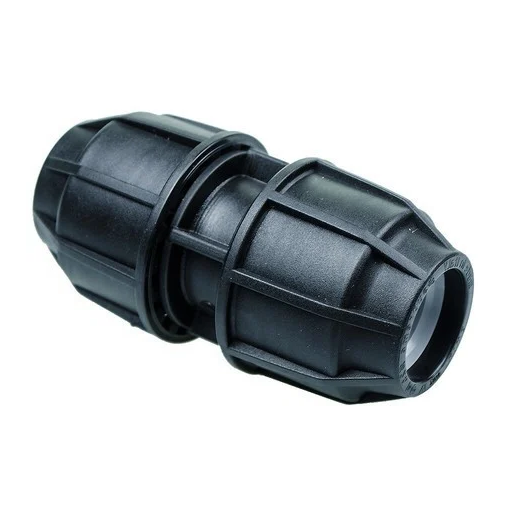
Durability and Longevity
HDPE pipe couplings are among the most durable due to the nature of the molecular structure of the material and the stresses that could be imposed upon it by the environment. HDPE provides good resistance to corrosion, abrasion, and chemical degradation, whereas steel and cast iron provided less corrosion resistance when the technologies came to be widely used in the chemical plant and wastewater industries. Such kind of resistance allows HDPE couplings to remain well-structured even in harsh environments that contain acids, salts, or organic compounds, which are normally central factors in the failure of other materials.
Also contributing to HDPE’s longevity is its resistance to external and internal pressure extreme changes. Their flexibility helps compensate for varying dynamic stresses arising due to thermal expansion, water hammer, and ground movements that are normally associated with critical infrastructure installations. If set up and maintained correctly, HDPE pipes and couplings can retain their integrity throughout extended service lives, frequently spanning 50 years. Such reliability results in less downtime and repair costs and also improves the efficiency of industrial and municipal systems.
In addition, polymer engineering innovations have led to newer grades and fabrication methodologies that boost coupling durability. For example, UV-stabilized grades of HDPE avert any degradation from prolonged solar radiation exposure, thereby making it practical for above-ground usage even in extreme climatic conditions without the risk of cracking or embrittlement. Alongside a robust array of stringent testing protocols and certifications, such breakthroughs reaffirm HPDEs’ position as a primary subject in applications requiring long-term, high-performing pipe coupling solutions. The combination of strength, versatility, and durability makes HDPE well-represented across industrial disciplines for building sustainable long-term value.
Cost-Effectiveness
As far as cost-effectiveness is concerned, high-density polyethylene (HDPE) constitutes an excellent material with a reputation of being bestowed upon it in situations across many industrial applications. The initial cost saving is due to the long life span and maintenance cost being very low. Systems employing HDPE generally obtain longer life due to the resistance of the material to environmental stress cracking, corrosion, and chemical degradation, thereby needing fewer or infrequent replacements and repairs. Also, HDPE pipes and fittings are lightweight compared to other materials such as steel or concrete, thus saving on transportation and installation costs. These savings on logistics translate into significant savings in the overall expenditure of the project.
Also, in itself, the process of making HDPE is highly efficient and competitive to make. Polymer science has undergone developments, which take into account an evolution in resin production towards higher qualities while minimizing waste and energy consumption. This lowers the upfront cost of the material and takes into consideration good production practices. When joined with fusion welding methods, HDPE serves as an impermeable and hard solution that eliminates the possibility of leakage-related losses and recurring costs related to maintenance. Given these reasons, HDPE is the more economical alternative, especially when considering huge projects such as water distribution systems, gas pipeline systems, and sewage systems.
The latter being more compatible with contemporary sustainable practices represents a further economic advantage. HDPE items are often made up of a large percentage of recycled materials, depleting the cost while still maintaining standards for sustainability. On the other hand, at the end of life, HDPE items can usually be recycled, providing more money for a circular economy. Hence, with the durability, ease of installation, and sustainability factors, HDPE undoubtedly prevails as a highly cost-effective solution where industries can aim at economic and performance priorities with very few compromises.
Resistance to Corrosion
HDPE has superb corrosion resistance capabilities and is, therefore, a favored material in industries that require longevity and reliability under harsh environmental conditions. HDPE can be considered chemically inert with most acids, bases, salts, and hydrocarbons, giving it much higher corrosion resistance than any metal piping system, which is subject to oxidative degradation and rusting, or erosion by chemicals, over time. This ability to retain structural integrity under these conditions ensures that HDPE can be utilized in extremely aggressive environments like industrial chemical processing plants or wastewater systems.
In addition, their resistance to microbially induced corrosion (MIC) acts in favor of other materials generally used for long-term infrastructures. MIC in buried metal pipelines is generally the corrosive attack initiated by bacterial mechanisms, leading to material degradation. Being non-porous with smooth internal surfaces, HDPE pipes inhibit bacterial growth and biofilm formation, thus completely negating the problem. Testing and case studies demonstrate that HDPE pipes can remain functional for over 50 years under regular service conditions with only minimal degradation.
Such high resistance to corrosion means less maintenance and longer operating life, all contributing to enhanced cost-effectiveness while ensuring steady performance. It is for these merits that HDPE stands out as one of the main choices for industries in which exposure to chemicals, moisture, or extreme temperatures is inevitable. It can operate without corrosion disturbances is in line with the increasing need for sustainable and dependable infrastructure solutions.
Challenges and Maintenance of HDPE Pipe Couplings
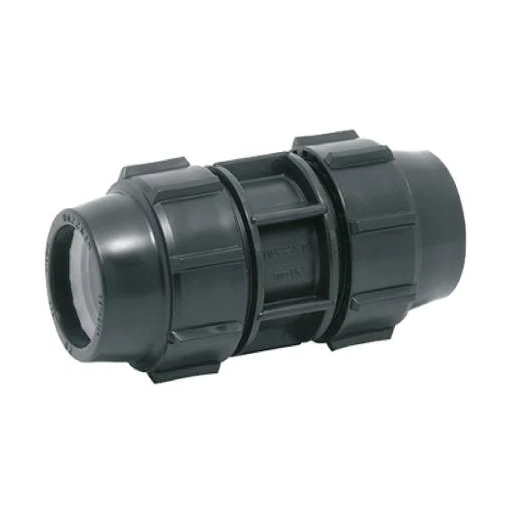
Maintenance Tips for Longevity
To maximize the performance and lifespan of HDPE pipe couplings, proper maintenance should always be undertaken. Some important aspects of the proper care of HDPE pipe systems are as follows:
- Regular Inspection Schedule: They should be inspected regularly for any defects, such as leaking joints, misalignments, or damages on the surface. Wears or stress should be diagnosed in time so that corrective action may be taken to prevent greater failures in the system.
- Cleaning and Removal of Debris: Clean the pipe couplings and the surrounding areas as prescribed to avoid the accumulation of dirt, sediments, or chemical deposits. Especially systems exposed to large concentrations of reactive chemicals where residue can, over time, compromise polymer integrity.
- Proper Installation: Make sure all couplings are correctly installed as per manufacturer specifications for alignment and torque requirements. Over-tightening or incorrect alignment introduces stresses and hence can lead to premature failure when placed under pressure.
- Temperature Fluctuation Monitoring: Keep on monitoring the thermal environment of the pipeline. While HDPE shows good resistance to extremes of temperature, occasionally repeated thermal cycling still adds to stress wear over time. Where necessary, try to insulate that would in all possibility contribute to the insulation against excessive expansion or contraction.
- Pressure Test and Monitoring: Conduct pressure tests from time to time to guarantee that the pipeline sustains pressure within the safe working range. Over-pressurization, in addition to stressing the couplings, hastens the degradation of all other materials that go with the system.
- UV Protection for Exposed Systems: Any system exposed to direct sunlight should be treated with an appropriate UV coating or protective covering. Prolonged exposure to ultraviolet radiation would weaken the outer surface of HDPE materials and lessen their strength and function.
- Documentation and Record-Keeping: Keeping records on all maintenance activities regarding inspections, repairs, working procedures, etc., is essential. Such detailed documentation will help track the performance trend of the system and in adherence to industry standards.
Through these maintenance procedures, operators can ensure throughout their lifespan the lowest level of downtime, durability, and reliability of HDPE pipe couplings. These practices follow industry standards and show that prompt maintenance is necessary to maximize the application efficacy of HDPE infrastructure.
Innovations in HDPE Coupling Technology
Recent new developments in HDPE coupling technology have spawned an era of precision engineering, better material composition, and integration with automatic monitoring systems. Modern HDPE couplings have been designed to compensate better for thermal expansion due to temperature fluctuations encountered in varying operational environments. The use of better technology in sealing has ensured that leakage practically ceased to be an issue even under very high pressures due to the use of multilayer gaskets and pressure-activated sealing elements.
Material innovations in HDPE manufacturing have guaranteed the use of reinforced polymers and composites in the making of HDPE outlets and couplings. Such substances provide the highest tensile strength and make good chemical resistance against industrial applications where corrosive media come into play. The regime has changed as far as monitoring and maintenance are concerned due to digital integration: Smart Coupling Solutions embedded with sensors connected to IoT can monitor structural integrity and performance in real time.
The above innovations demonstrate the emphasis on strengthening the durability and operational efficiency of modern HDPE systems for stronger infrastructure with fewer operational disruptions. With such advanced materials and smart systems, industries are now promoting environmental sustainability and the long-term reliability of HDPE coupling applications.
References
Frequently Asked Questions (FAQ)
Q: What are HDPE pipe couplings used for?
A: HDPE pipe couplings are used to connect two segments of HDPE pipe, ensuring a secure and leak-proof connection. They are widely utilized in water distribution and pipeline systems due to their high strength and durability.
Q: What is the method for joining HDPE pipes?
A: The common methods for joining HDPE pipes include butt fusion, socket fusion, and electrofusion. Each method provides a strong joint suitable for various applications, including water supply and gas distribution.
Q: Can HDPE pipe fittings be used with PVC pipes?
A: While HDPE pipe fittings are primarily designed for high-density polyethylene pipes, they can sometimes be adapted for use with PVC pipes. However, it’s essential to ensure compatibility in terms of pressure ratings and application requirements.
Q: What are the different types of HDPE couplings available?
A: Different types of HDPE couplings include mechanical couplings, electrofusion fittings, and butt fusion fittings. Each type serves specific applications and pipe sizes, providing flexibility in various piping systems.
Q: How do I connect HDPE pipes using couplings?
A: To connect HDPE pipes using couplings, you typically insert the ends of the HDPE into the coupling and secure them using the appropriate joining method. Ensuring proper alignment and a clean pipe surface is crucial for a leak-proof connection.
Q: What are the properties of HDPE that make it suitable for piping systems?
A: HDPE is known for its high strength, flexibility, resistance to corrosion, and low-pressure applications. These properties make it ideal for various applications, including water distribution and chemical processing.
Q: What is the cooling time when using electrofusion fittings?
A: The cooling time for electrofusion fittings varies depending on the diameter of the pipes and the specific fitting used. Generally, it is essential to allow sufficient time for the HDPE material at the joint to cool and solidify to ensure a strong bond.
Q: Are HDPE couplings suitable for outdoor applications?
A: Yes, HDPE couplings are suitable for outdoor applications due to their resistance to UV radiation and environmental factors. They are commonly used in distribution systems exposed to various weather conditions.
Q: How can I repair damaged HDPE pipe couplings?
A: To repair damaged HDPE pipe couplings, you may need to cut out the damaged section and replace it with a new coupling using the appropriate joining method. Ensure that the pipe surfaces are clean, and follow the manufacturer’s guidelines for installation.
Q: What makes electrofusion fittings a popular choice for joining HDPE pipes?
A: Electrofusion fittings are popular for joining HDPE pipes because they provide a secure, leak-proof connection through the application of electric current, which melts the HDPE material at the joint, creating a strong bond. This method is especially useful in high-pressure applications.



